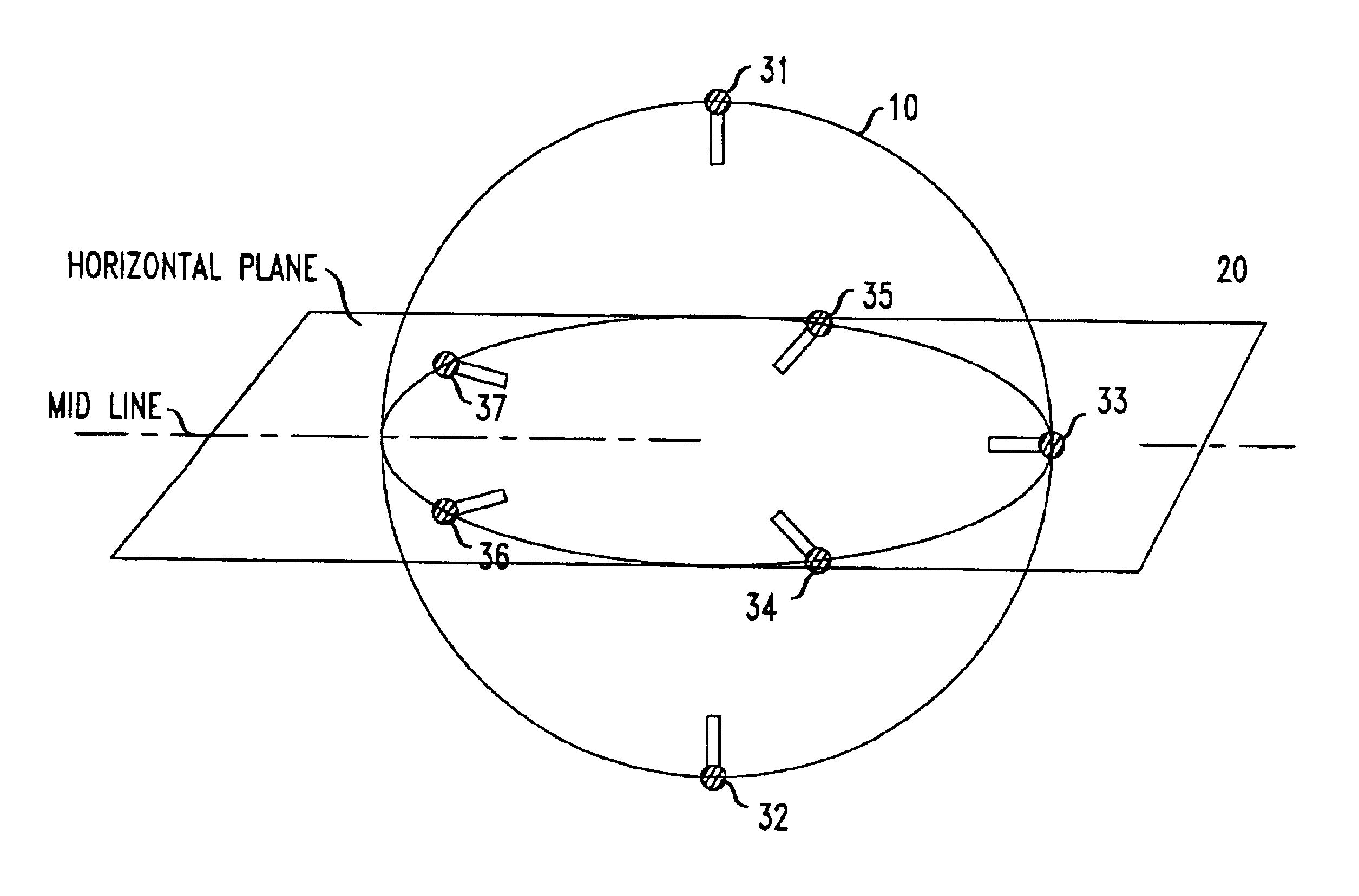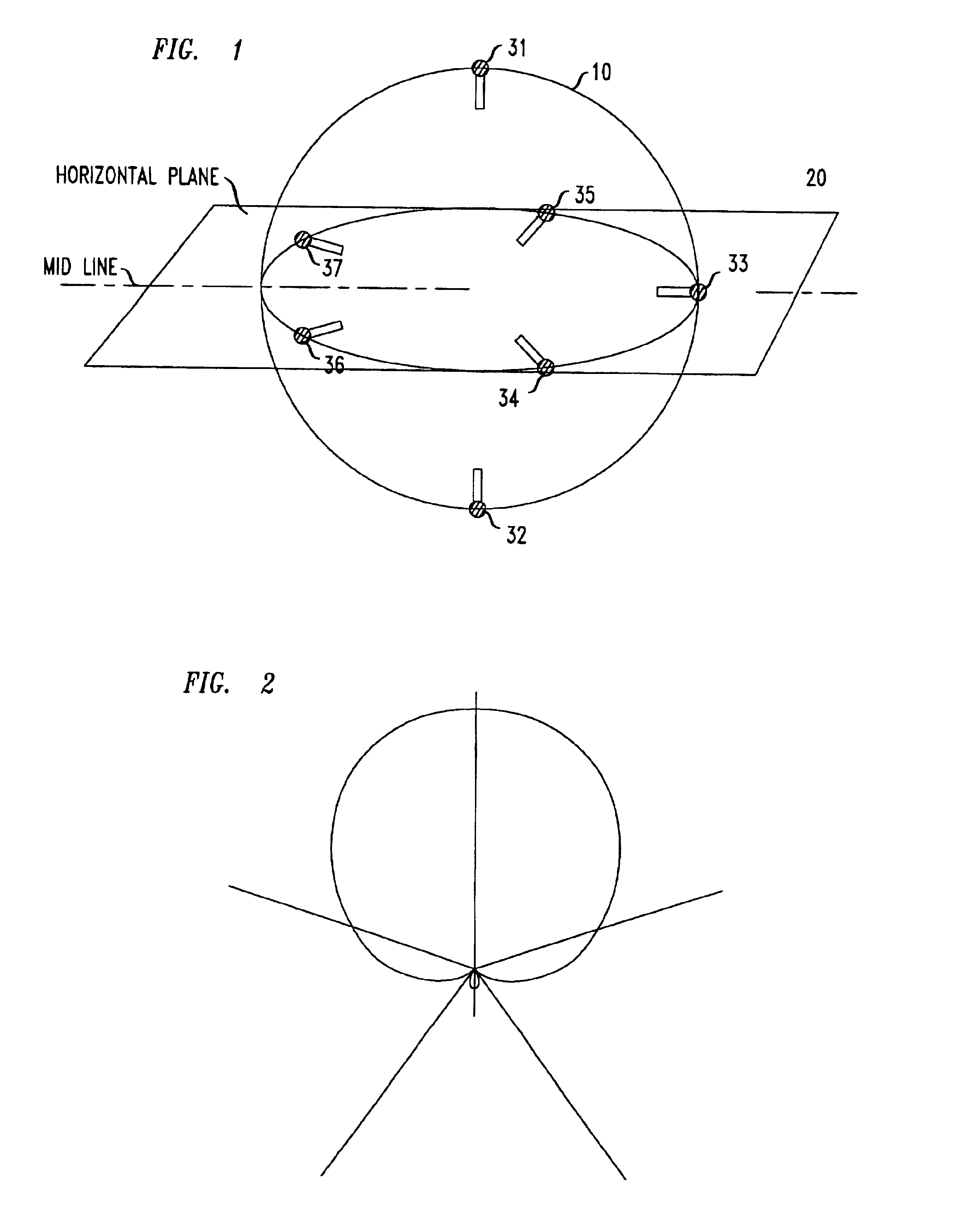Microphone array for preserving soundfield perceptual cues
a microphone array and soundfield technology, applied in the direction of stereophonic arrangments, electrical transducers, transducer details, etc., can solve the problems of limited attempts, impossible to achieve, and unlikely to achieve exact soundfield reproduction,
- Summary
- Abstract
- Description
- Claims
- Application Information
AI Technical Summary
Benefits of technology
Problems solved by technology
Method used
Image
Examples
Embodiment Construction
horizontal microphones are recorded.
BRIEF DESCRIPTION OF THE DRAWINGS
[0009]FIG. 1 presents an arrangement of microphones in accord with the principles of disclosed herein; and
[0010]FIG. 2 illustrates a microphone sensitivity pattern of microphones used in the FIG. 1 arrangement.
DETAILED DESCRIPTION
[0011]In connection with human perception of the direction and distance of sound sources, a spherical coordinates system is typically used. In this coordinate system, the origin lies between the upper margins of the entrances to the listener's two ear canals. The horizontal plane is defined by the origin and the lower margins of the eye sockets. The frontal plane is at right angles to the horizontal plane and intersects the upper margins of the entrances to the ear canals. The median plane (median sagittal plane) is at right angles to both the horizontal and frontal planes. In the context of this coordinate system, the angular position of an auditory event is described by γ, which is the d...
PUM
 Login to View More
Login to View More Abstract
Description
Claims
Application Information
 Login to View More
Login to View More - R&D
- Intellectual Property
- Life Sciences
- Materials
- Tech Scout
- Unparalleled Data Quality
- Higher Quality Content
- 60% Fewer Hallucinations
Browse by: Latest US Patents, China's latest patents, Technical Efficacy Thesaurus, Application Domain, Technology Topic, Popular Technical Reports.
© 2025 PatSnap. All rights reserved.Legal|Privacy policy|Modern Slavery Act Transparency Statement|Sitemap|About US| Contact US: help@patsnap.com



